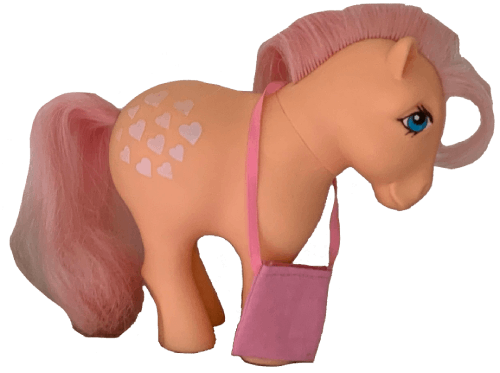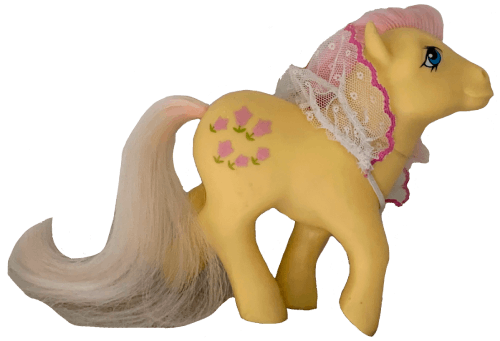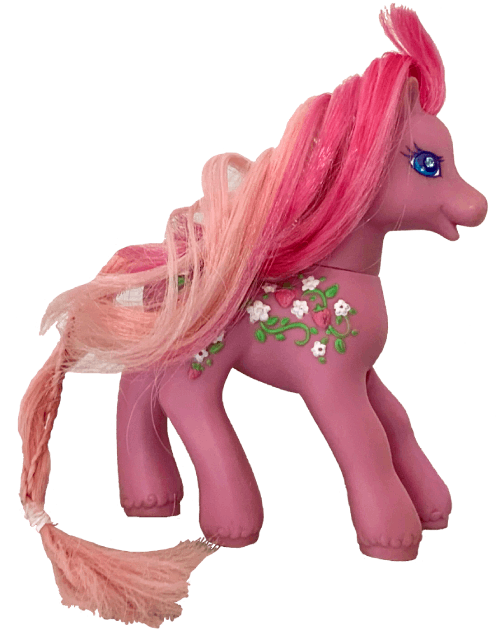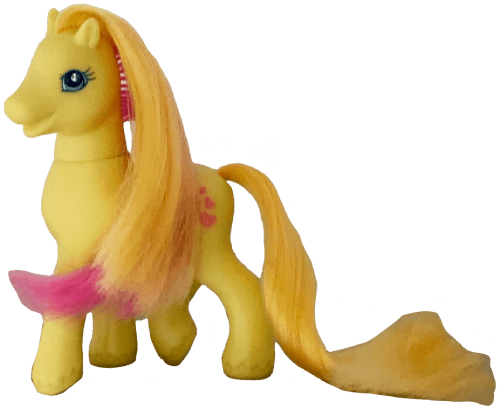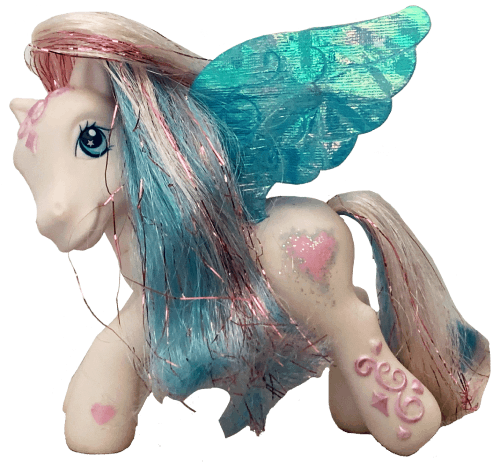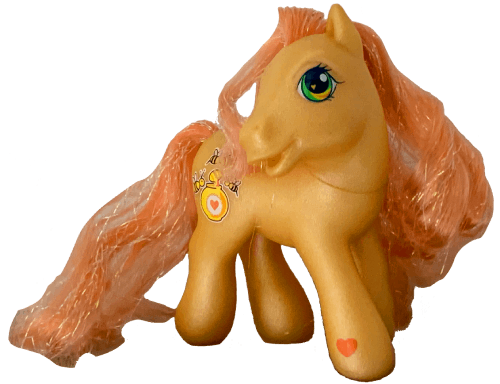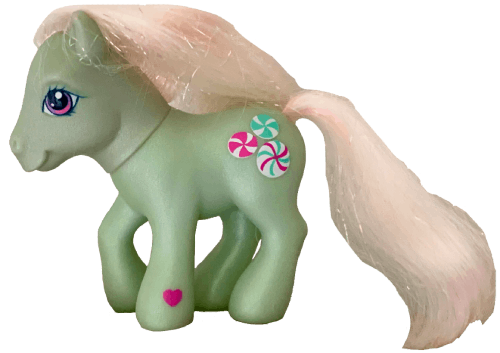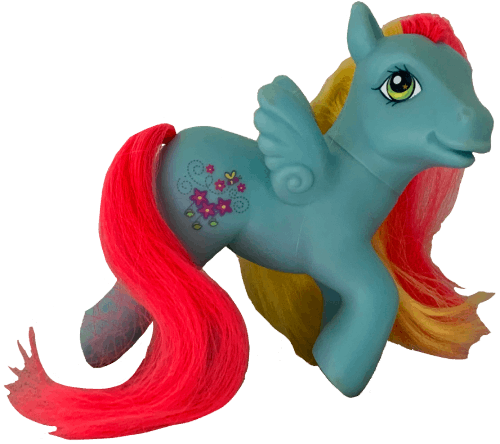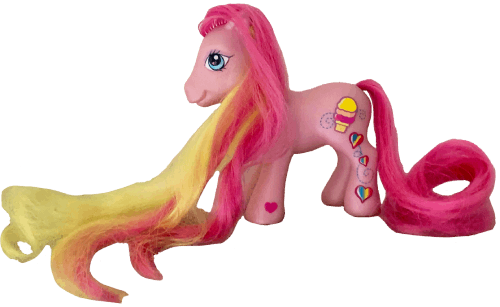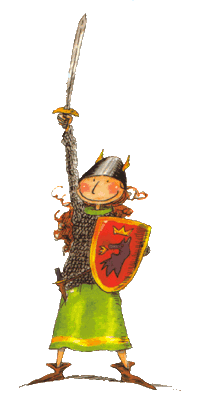Horses and ponies, collecting, bracelet making, plushies.
A while ago I asked myself: why are horses such a popular animal when it comes to toys? From My Little Pony to Schleich, from Breyer to Bella Sara, they seem to have carved their own niche for young players and adult collectors alike. I have tried finding articles about it; all I could find was pseudoscientific 'why girls like horses' rubbish, not much about collecting. In absence of any studies, here are my thoughts, which I may supplement with actual surveys in the future.
Good for play
Horses have four legs, which means they don't need to be in very specific poses to
stand up by themselves. This means they lend themselves well to scenes with many characters manouvered by a single player, who can set the characters they're not holding on the plane without losing the flow of the moment. Their lack of flexibility, compared to animals like cats and dogs, also makes them more apt for rigid figurines - cat figurines are often depicted sitting or lying down, which makes for neat art pieces, but might not be as stimulating when it comes to imaginative play. Flexible animals might be more suited for plush toys (for the record: I have cat figurines and horse plushies). Horses, however, have a variety of poses that, while obviously static, can simulate movement pretty easily.
This leads into the sensorial aspect, which can't be understated. With just a flick of your wrist, you can make horse figurines run! Their hooves make a sound on the surface they gallop on! The illusion of movement is very easy, especially with the auditory aid. Then, there are the manes, at least on some toys. While figurines with a more all-ages target like Schleich and Breyer have a sculpted mane, most toy horses intended for play (especially the ones aimed at girls) have manes and tails that can be combed and styled. Again, like a doll, but it stands up by itself; also, unlike a doll, a horse is not human, which means anyone could be a horse. A horse mostly bypasses the problem of possibly alienating its player, because it doesn't resemble any other human either. This is not to say that anthropomorphised horses may not have eurocentric characteristics, but that's a problem that comes from the anthro- component; a horse in its purest form, for anyone who's not familiar with the history of breeds, at least, could be for anybody and any body.
At the same time, a horse is easier to anthropomorphise than many animals: the mane once again comes into play, allowing the child to see a similarity between the way they adorn their toy horse's mane and the way they style their own hair. The cultural space horses occupy in the modern day (especially in a child's simplified worldview) may also contribute: they're not small animals who live with humans, but they're not wild like lions or wolves; they're often treated with more regards than their rural neighbours such as cows and pigs: they rest in single room stables and their owners lovingly brush them and feed them treats. If house pets are fur babies, horses are fur coworkers.
Good for everyone
The variety of horse breeds, on the other hand, is good for collectors and players alike. A child may play with realistic horse figurines of various breeds, all with distinct builds and colours, which means they can easily tell them apart; a collector, of course, loves having many versions of the same category of things, and as a toy car collector will distinguish the pieces of their hoard by their model, a horse figurine collector will do the same by their breed. Horse toy designers, then, have a starting point that lends itself to unrealistic colours and shapes (My Little Pony, Bella Sara, Magiki, etc.)
Why not dogs, then? My guess is that the variation between dog breeds might be too extreme; a fantasy horse is always recognisable horse, but a fantasy dog has to either be closer to a wolf or to make a strong choice when it comes to the breed (and, from what I've seen, a lot of dog enthusiasts are more rigid with their breed preferences, and might opt to collect different portrayals of the same breed instead of an entire toy line which depicts every major breed). The cultural associations between certain dog breeds and certain groups or occupations is also more strongly radicated than the ones of horse breeds, partially due to how ubiquitous dogs are, which complicates things. Cats, in addition to the problem of not doubling as excellent toys in the form of rigid figurines - compared to their plush alternatives - are seen by many people as "not having breeds". Cat breeds are more niche knowledge than dog breeds - therefore removing the general market - but cats are still more affordable than horses, so someone who's a cat enthusiast may get a cat - even a purebred cat - whereas a horse enthusiast may not have the option to buy and keep a horse. Moreover, dogs and horses are more often used as working animals, therefore how their breed affects their temperament and physical capabilities is more often discussed among fanatics, whereas with cats, talk of breeds is mostly a hobby reserved for internet forums and pet shows.
Finally, the iconography of the horse lends itself to reimagination: pegasi, unicorns, kelpies, horses in heraldry and horses of legends, god-horses. They are omnipresent, and often possess unnatural physical characteristics while retaining their equine essence. The figure of the horse possesses a degree of mythical variation inferior only to that of the human.
Collector or player?
Thus far, I have referred to the two main groups of horse figurine fans as collectors and players. While I consider the approaches to be largely separate behaviours, I believe most people are both, to different degrees and at different times. The child who collects horses to play with may memorise the breeds in a toy catalogue, and the adult who collects them may make them trot as they set them down; one may play with ornament horses or, famously, collect toys meant for children. None of this is exclusive to toy horses in particular, especially the last bit, but I believe it should be clarified here especially, where two very different marketing targets so often collide. Whatever your most frequent approach may be, all of this might apply to you just as it might not; don't box yourself into one field or the other, and enjoy your hobby.



